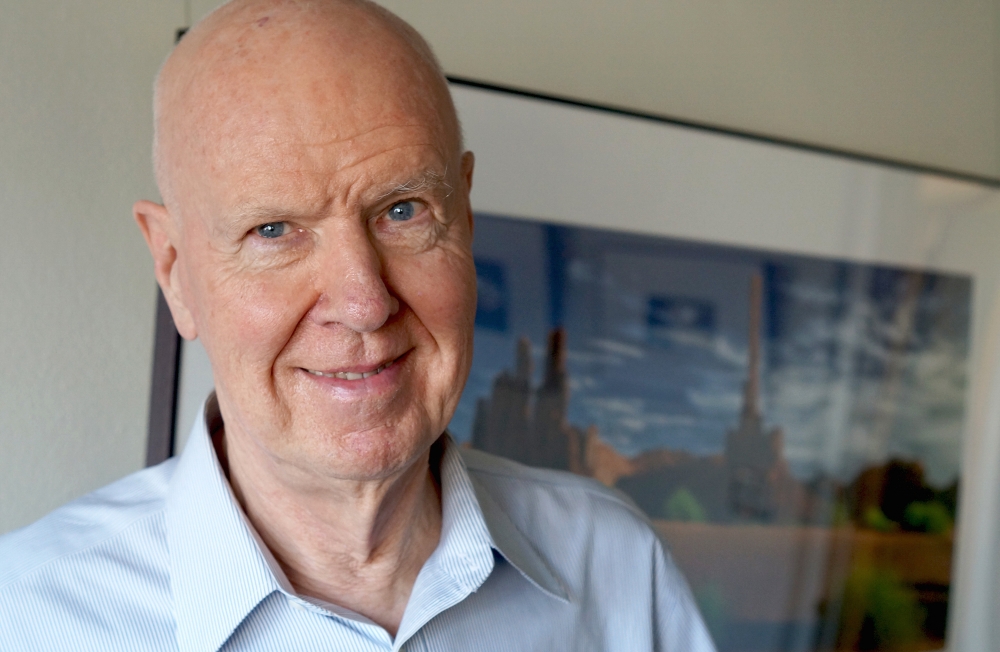
Toward Carbon Neutrality
Two years ago, UC President Janet Napolitano announced the Carbon Neutrality Initiative, which represent a pledge on the part of the University of California to become carbon neutral by 2025 — and to be the first university to achieve that goal.
The State of California has its own climate targets: Reduce carbon dioxide CO2 emissions to 40 percent below 1990 levels, shift California’s electricity production to at least 50 percent renewable sources and increase building efficiency by 50 percent, all by 2030.
Moving the challenge forward, a group of 200 scientists and scholars gathered at UC San Diego Oct. 26-27 for the first UC Summit on Carbon and Climate Neutrality. With all 10 campuses represented, the conference examined ways in which UC research is transforming the possibilities for carbon and climate mitigation, and focused on scalable solutions for achieving significant greenhouse gas reduction that can be applied to California and to the world. Among the participants were state and federal officials, corporate sustainability leaders and green technology entrepreneurs.
In true interdisciplinary fashion, UC is addressing the issue from a variety of perspectives — science, culture, politics and communication — and draws on expertise from a broad spectrum of fields, including climate science, ethics, economics, energy, environmental justice, political science and religion.
Speakers included California Gov. Jerry Brown; UC President Janet Napolitano; Achim Steiner, executive director of the United Nations Environment Program, who works to negotiate multinational agreements for addressing climate change; Nobel laureate and chemist Mario Molina; and Ellen Williams, of the U.S. Department of Energy and director of the Advanced Research Projects Agency–Energy (ARPA-E).
David Auston, executive director of UCSB’ Institute for Energy Efficiency, served as the conference’s program chair, working closely with conference chair Veerabhadran Ramanathan, director of UC San Diego’s Center for Atmospheric Sciences at the Scripps Institution of Oceanography, and a team of organizers from across UC.
“A number of significant things came out of the conference,” Auston said. “One is that the governor and the UC President are on the same page, and the message was very clear: the University of California is a resource in this area, whose goals with regard to addressing climate change are very much aligned with the state’s goals. And as a resource, we can help the state achieve its goals as we are achieving our own for the 10 campuses.
Auston also noted that research and advances taking place at the UC and state level can serve as a model for the rest of the country and, indeed, the world because both California and UC are leaders in climate mitigation. “There’s that scaling and example by way of model that is also very important,” he said.
Key to the summit’s success, according to Auston, was its multidisciplinary nature. “It wasn’t just about technology measure, which were addressed and are very important,” he said, “but also policy issues that are important. And economic issues and social science issues related to communication and behavioral adaptation.
“It was largely a research conference,” Auston continued, “but applied research. To meet this 2025 goal of carbon neutrality, we need research that is applicable in the short term. So there was a strong focus not just on technology but also on all the other related aspects. Climate science was represented, but we also had people talking about, for example, whether market-based measures work better than what policy people call command-and-control measures, which are legislative directives.”
Released at the summit was the executive summary of the 300-page report “Bending the Curve: Ten scalable solutions for carbon neutrality and climate stability.” With a total of 50 authors, all from UC, the report will be published in book form next year by UC Press.
“There is a terrific outpouring of interest in this,” Auston noted. “The campuses often compete with one another, but this was an example of where we’re coming together to really collaborate closely. And that’s very gratifying.”



